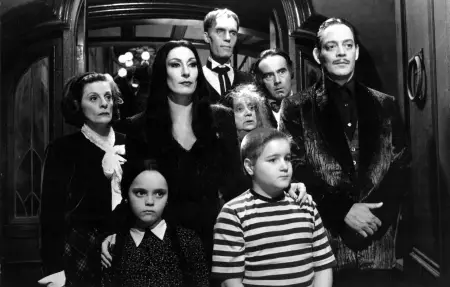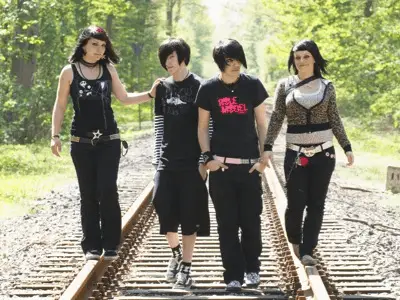Goth and emo basically come from the same roots and are often described as people who are into black clothing and other things that have nothing to do with ponies and warm feelings. Despite sharing some common ground, goths and emos are distinct subcultures, each with unique characteristics and sense of fashion. This article seeks to explain just how goth and emo are different from one another.
Summary Table
| Goth | Emo |
| Came from post-punk in England in the early 1980s | Came from hardcore punk in the mid-1980s |
| Associated with horror, religious or occult imagery, and free thinking | Associated with heavy emotions, anger, self-hurt, and depression |
| Black hair, pale make up, dark clothing, and silver jewelry | Short, layered, black hair with colored highlights, tight t-shirts, black wristbands, and skinny jeans |
Definitions

Goth, or gothic culture, is a modern group of people who are into fashion elements such as black outfits or clothing (usually period-styled), dyed jet black hair, dark eyeliners, and black fingernails. Goths usually wear Victorian, punk, and deathrock styles of clothing accompanied by pale face makeup. While most goths prefer gothic rock music, they are known to appreciate a wide range of musical genres. In addition to gothic rock, the goth subculture has spawned musical styles such as industrial, deathrock, neoclassical, ethereal wave, and dark wave.
The roots of goth subculture can be traced back to early 1980s England, where the gothic rock scene developed from the post-punk genre. Significant post-punk music groups such as Joy Division, Bauhaus, and Siouxsie and the Banshees were considered harbingers of the goth movement. Bauhaus’ 1979 single “Bela Lugosi’s Dead” is considered by many in the goth scene as the starting point of goth rock. Horror films, vampire culture, and 19th-century Gothic literature were also seminal sources of gothic culture and imagery. The goth scene has outlived many of its contemporaries and continues to attract large audiences. For instance, Germany holds large goth festivals once a year. Goths don’t usually like being mistaken for emo.

Emo is a general term for a musical genre which features heavily emotional and usually confessional lyricism. It is an off-shoot of post-hardcore which takes its roots from the hardcore punk scene in Washington, D.C.during the mid-1980s. From its beginnings, emo was called “emocore” or “emotional hardcore” and pioneered by bands such as Embrace and Rites of Spring. As American punk bands started to adopt emo, its sound and themes were overhauled as a style of pop funk and indie rock. This was apparent in the early 90s emo acts such as Sunny Day Real Estate and Jawbreaker. Emo broke into the mainstream by early 2000s with platinum-selling bands such as Dashboard Confessional and Jimmy Eat World. Ten years later, the popularity of emo dissipated. By the end of 2010, emo enjoyed a resurgence in the underground scene making use of the aesthetics and sounds of early emo bands.
Emo fashion became ingrained into the emo subculture by the time it went mainstream. Side-swept bangs, thin, smooth, highlighted straight hair bunched to the side and back of the head, skinny jeans, short-sleeved t-shirts printed with the names of emo bands, black wristbands, and studded belts were all staple emo fashion.
Emo has been stereotyped as being heavily emotional, shy, sensitive, and full of anger. Followers of emo have also been known to be prone to stereotypes such as self-injury, depression, and suicide.
Goth vs Emo
So now, what’s the difference between goth and emo?
The goth subculture is known to have come from post-punk, early 80s England, while emo is an offshoot of hardcore punk in Washington D.C. in the mid-80s. Goth and emo clothing are similar, with dark colors or black as a recurring theme. However, goths are into black period-styled clothes (Victorian or Elizabethan) while emos often prefer tight shirts, studded belts, and skinny jeans.
Goths often see their subculture as a way of life, while emo is often considered by critics as a phase or a fad. Goth is also associated with horror and religious imagery. Emo was often associated with suicide, self-hurt, and social rejection which emo bands usually deny.
Video
Check out this video comparing goths and emos.





